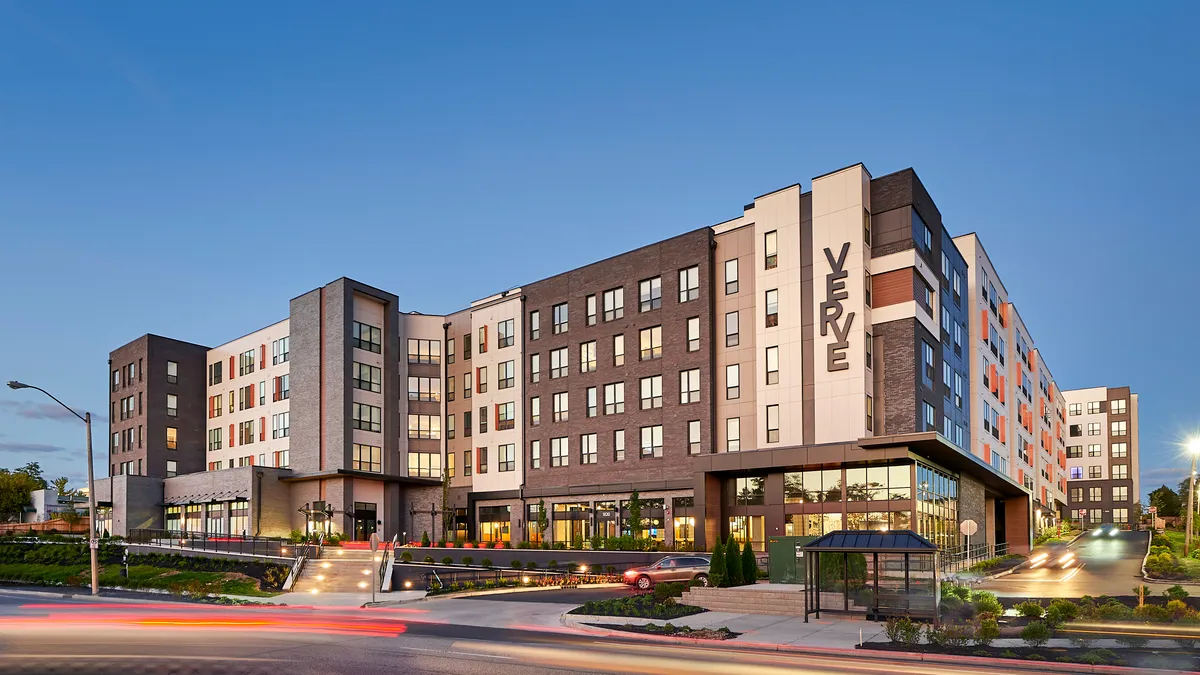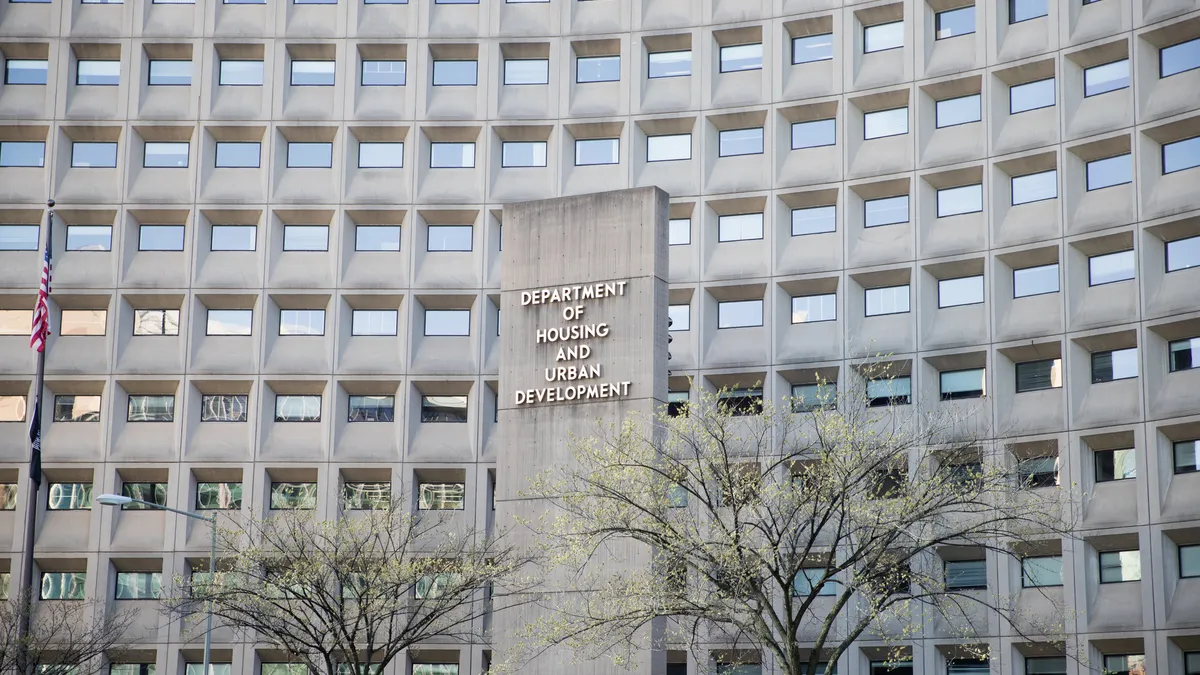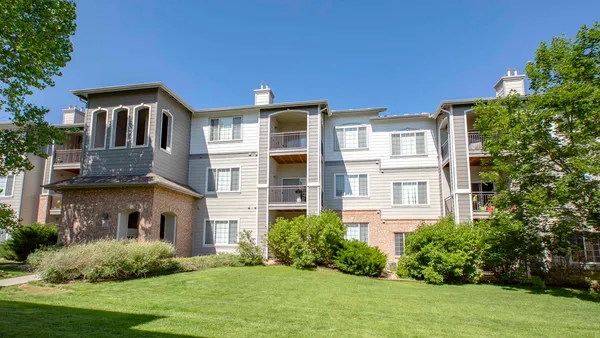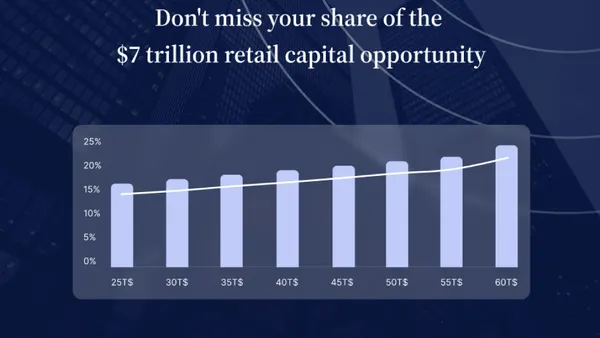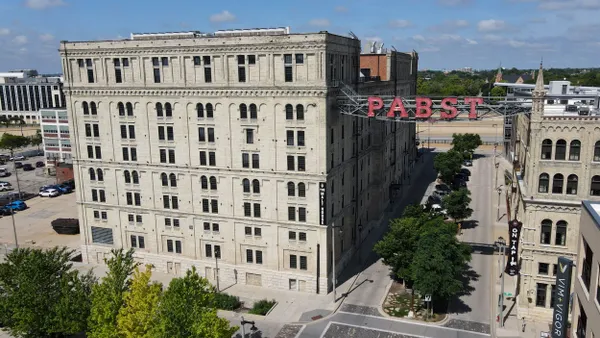The rocky financing environment and stubbornly high construction, labor and land costs have forced many apartment developers to postpone projects into 2024.
But some firms are still getting new deals out of the ground.
Apartment and student housing developer Subtext is on pace to start 1,000 new units this summer. Currently, the St. Louis-based company has projects under construction in Tennessee, Idaho, Wisconsin, Indiana and Ohio.
“We’re really focused on high-growth secondary markets,” Marina Malomud, partner and chief operating officer of Subtext, told Multifamily Dive. “So that has been markets like Boise, Idaho; Phoenix; Tampa; Nashville; Denver. We’re really focused on the Southeast and Mountain West.”
Subtext has traditionally built and sold new properties, but that has been changing. “Historically, we've had more of a merchant build strategy, and that is moving more toward assets under management strategy,” Malomud said. “But it is an asset-by-asset decision. It's really just a matter of building incredible projects in irreplaceable locations and wanting to hold on and operate them long term.”
Here, Malomud talks with Multifamily Dive about construction finance, evolving underwriting and how Subtext evaluates various markets.
This interview has been edited for brevity and clarity.
MULTIFAMILY DIVE: How have you been able to continue to get financing for your projects?
MARINA MALOMUD: We've been really lucky in having great relationships with lender partners. We typically partner with regional banks, and we've had repeat relationships with them. For deals that were closing this summer, we're still getting term sheets and the terms are not too far off from where they were before interest rates started going up. Certainly proceeds are lower. But we're still able to get them capitalized right around 60% [loan to cost]. It's typically like [Secured Overnight Financing Rate] plus 300.
It's really a matter of continuing to prove value to all of our lender partners. And we're lucky to be in markets that are really compelling. We're lucky to have projects that historically have seen double-digit rent growth. And so that helps us.
Are you seeing any new lending groups in the market?
It's largely the same groups. Repeat relationships are really what's succeeding in the market right now. That is not to say that there are not new groups coming in. But typically, it's the groups that we have been familiar with over the last few years.
How are you revising your underwriting on projects?
We're underwriting larger interest rate reserves. We update our SOFR curve bimonthly. So we're increasing reserves for things like insurance costs, which would be higher in some markets. To make sure that we've got enough interest reserves, we're stress testing different refinance scenarios and really just underwriting for a more conservative lending environment.
How do you evaluate the markets that you’re in?
We've developed a proprietary ranking model on both the student and the multifamily verticals. For multifamily, it has a lot of indicators. But it really boils down to labor growth and migration patterns. When you look at the markets that we've developed in, they've got both of those in spades. We're developing for markets that have a lot of runway in fields like health care, tech and professional services — where you see businesses relocating to.

At the same time, these are cities where millennial and Gen Z growth has been really strong over the preceding five years and is projected to be strong going forward.
Gen Z is not talked about a lot yet in the multifamily space because they're only now starting to graduate from college, but this is a huge untapped rental pool that's going to come into the market. We're really tracking where those folks are projected to go and they're going to be followed by jobs.
It's not as simple as this market has seen 100,000 jobs relocate in the last year, although those make great, great headlines. We're really digging in deep on all the indicators that create that long-term growth within a market.
Are you seeing the cost to build decline?
We're not seeing decreases. We are seeing plateaus in some markets that have a deeper subcontractor bench. That obviously benefits underwriting. In markets that have a really tight subcontractor base, costs are not plateauing. They're continuing to grow, which forces you to get creative. We've had a lot of luck and fortune with traveling subs — bringing contractors into markets where there's just not enough labor supply. But, it really varies. It's a very local thing. And from a land perspective, land is not repricing.
Click here to sign up to receive multifamily and apartment news like this article in your inbox every weekday.



